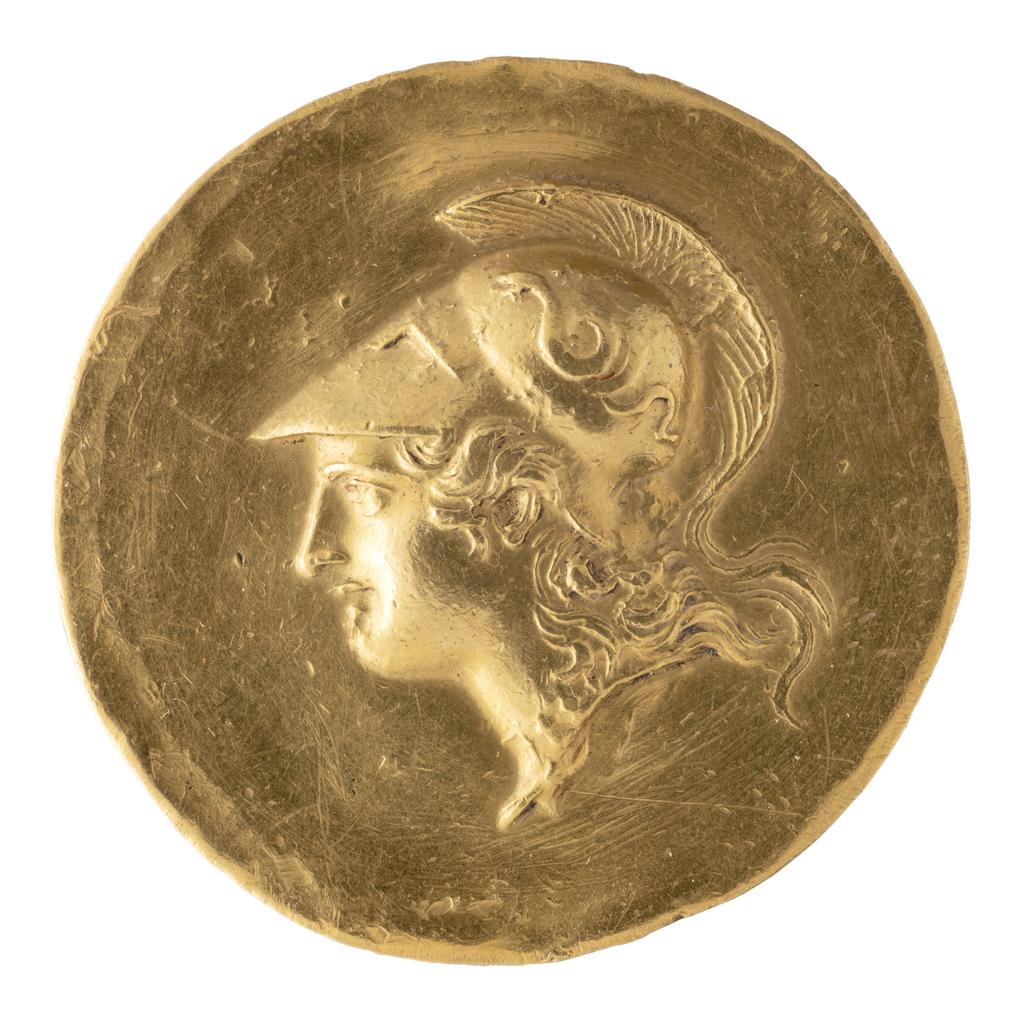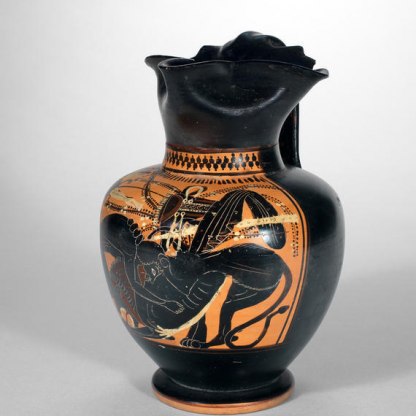Alexander the Great

This young man, with his smooth cheeks, sensitive face and long, centrally parted hair, is instantly recognisable as Alexander the Great, the fourth-century BCE Macedonian king who by the time he died, aged 32, had conquered most of the known world. The statue was made in Egypt, around two hundred years after Alexander’s death, and it demonstrates well the importance that his successors attached to the great man’s image.
In late 332 BCE Alexander succeeded as pharaoh of Egypt. Before leaving the country to continue his conquests in the East, he founded a new city on the Mediterranean coastline and named it after himself. Within eight years he was dead, but Alexandria was to become Egypt’s capital and remain so for over a thousand years. This small statue was inspired by a large cult image from the city where, as founder, the deified Alexander was especially revered.
He is shown wearing the aegis – a goatskin fringed with snakes and decorated with a gorgon’s head. This impenetrable breastplate had long been associated with the supreme Greek god Zeus and his daughter Athena, the warrior goddess of wisdom and patroness of the city of Athens.
The aegis, therefore, defines Alexander as an invincible fighter, like Athena, who wore the garment in an epic battle between the gods and the giants. From other more complete versions of this statue type, we can surmise that he originally held a spear in his upstretched right arm, a sign that the vast territory he had conquered was ‘spear-won land', and his by right of conquest. Before setting foot on Asian soil at the beginning of his military campaign in the East, Alexander had symbolically hurled a spear onto the shore near Troy.
In his missing left hand, Alexander may once have held an image of Athena, a replica of the Palladion, a famous statue which depicts the goddess striding forward, spear and shield raised. This close association with Alexander suggests that the goddess has extended her divine protection from Athens to Alexandria, a new centre of culture and learning in the newly forged, Greek-dominated world.
Athena appeared on coins that Alexander issued during his own lifetime, and the pair continued to be associated long after his death. A particularly fine gold medal in the Fitzwilliam, [Leake 4210], probably dating from 242 CE, shows the helmeted head of the goddess on one side, and Alexander riding his horse Bucephalus in a lion hunt on the reverse.

By wearing the aegis, Alexander is being presented as an equivalent of, if not an equal to Athena. He is to Alexandria what Athena is to Athens: a divine patron and a protector.
When Alexander died, one of his generals, Ptolemy, stole his corpse and eventually bought it to Alexandria where it was preserved and displayed. A cult developed around the tomb. Ptolemy – whose family would rule Egypt until the fall of Cleopatra VII in 31 BCE – energetically advertised his legitimacy as a successor to Alexander by putting the dead king’s image on his coins. The name of Ptolemy was therefore indelibly linked with the image of Alexander in the minds of whoever handled this currency.
The aegis hangs over Alexander’s shoulders here like a chlamys – a sort of mantle often worn by travellers in the ancient world. Several ancient authors mention that the city of Alexandria was shaped like a chlamys. So a mutual relationship between Alexander and his new city is suggested. Just as the divine Alexander – whose name means ‘repeller of men’ – gave form and protection to the city that bore his name, so is Alexandria shown to protect the body of its illustrious founder.
Themes and periods
Data from our collections database
Alexander the Great
Legal notes
Bought from the Greg Fund, 1970
Acquisition and important dates
- Method of acquisition: Bought
- Dates: 1970
Dating
- Ptolemaic Period
- Hellenistic
- Production date: circa 100 BC
Place(s) associated
- Ptolemais
Materials used in production
Read more about this record3D scan
Accessibility Notice:
The 3D model on this page is hosted on Sketchfab and may not be fully accessible to everyone, including users of assistive technologies. We apologize for any inconvenience.
Other highlight objects you might like
Suggested Curating Cambridge products
Sign up to our emails
Be the first to hear about our news, exhibitions, events and more…





